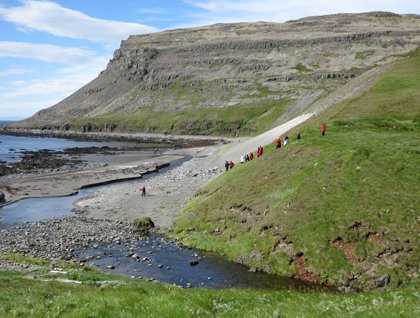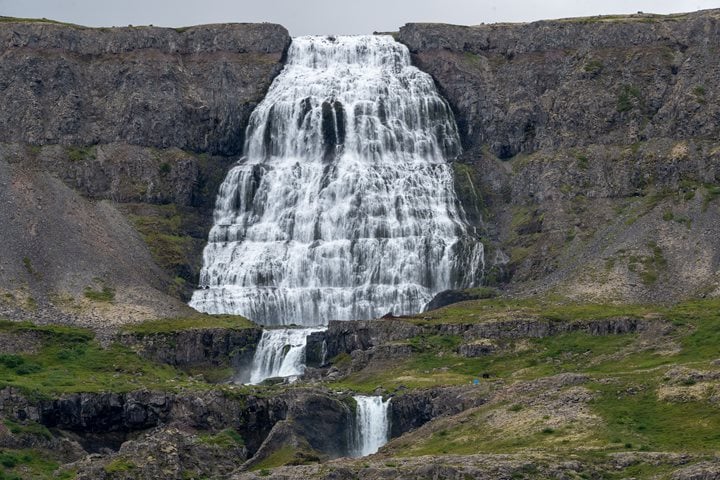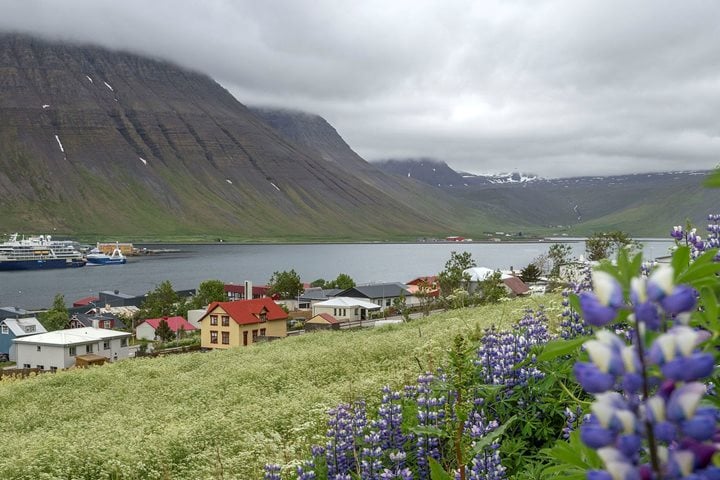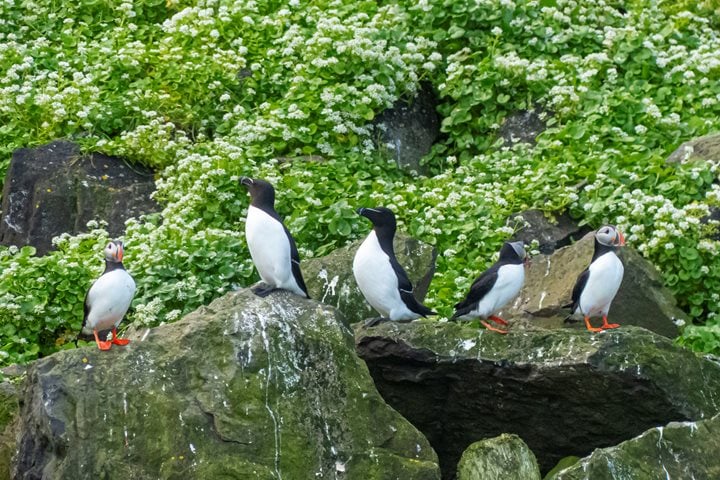It feels strange to arrive in Iceland from the north and experience the island for its southern qualities; yet this is what we have done. The cold Greenland Current has given way to the North Atlantic Drift: snow and ice to early summer sunshine. Yesterday’s heavy rain passed through to leave the bright blue skies and lenticular clouds. This has been a true expedition, with the expedition leader and the captain on the bridge early morning optimizing our daily schedule. This morning, after cruising beside the spectacular bird cliffs at Latrabjarg before breakfast, we chose to make an expedition stop at Brekkuhlid in Breidafjord. A series of walks were offered in a pristine landscape with the remains of a former farmstead set amongst an abundance of spring flowers, including mountain aven, the Icelandic poppy, and wild thyme in abundance.
After lunch we re-positioned to Flatey, a low-lying island in the middle of the wide expanse Breidafjord that has been settled since the time of the first Viking settlers. It is an emblematic place, a village commanding a rich hinterland from which the Vikings launched their westward expeditions to Greenland and on to North America. Today the island is home to some half-dozen families on a year-round basis but those numbers are augmented by many more city slickers from Reykjavik in the summer months who come to enjoy the summer sunshine and commune with their heritage and enjoy the bird life. Nesting Arctic terns, redshanks and snipe were in evidence this afternoon as we enjoyed our exploration of the island.
The island had a Cistercian monastery, founded in the twelfth century, of which no trace remains but it is thought to lie in the vicinity of the present church. That church has a series of wonderful murals painted by a Catalan visitor to the island in the 1960s, Baltasar Samper, who offered to decorate the church in exchange for food and lodging. The altarpiece is a delightful Christ figure wearing an Icelandic sweater. Behind the church is Iceland’s smallest library, containing a facsimile of the Flateyjarbok, a collection of illuminated mediaeval manuscripts written on vellum that was in the possession of Flatey family for centuries before being transferred to Copenhagen by the local bishop in 1659. To great national rejoicing the Flateyjarbok was returned to Iceland in 1971 and the original is today housed in Reykjavik. In many ways, Flatey represents the best of the deep cultural heritage that is such a notable feature of Icelandic life.









